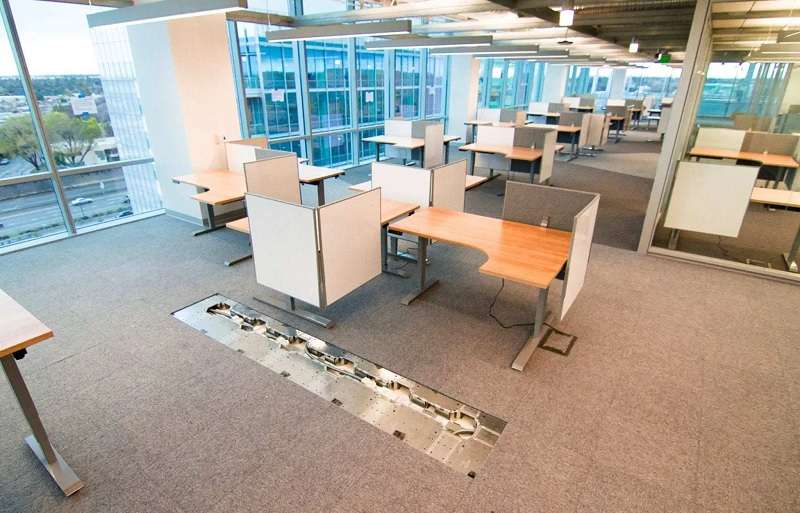Over a decade ago, the real estate industry suffered a cataclysmic series of events that shook global economies to their core. The Great Recession of 2007 and 2008 had as much of a long-lasting impact on commercial real estate (CRE) as it did residential real estate. However, resulting disruptions in commercial real estate over the past decade have had far broader implications. For example, CRE workplace companies like WeWork raked in billions of dollars from trends like coworking.
In 2019, numerous real estate and economic experts projected modest but steady growth in 2020. In a Deloitte 2020 commercial real estate outlook published in October 2019, 75 percent of CRE C-suite executives expected capital availability to increase in 2020. Today, nearly halfway through 2020, WeWork is seeking a stay on rents from its landlords—an example of how even the most iconoclastic disruptors weren’t prepared for something like a pandemic. The co-working space giant is the largest tenant of commercial real estate in New York. With many of its renters refusing to pay rent and WeWork unwilling to pay its rent, landlords have to decide whether to wait for WeWork to pay its arrears of rent, grant it relief, or seek eviction.
It’s Time to Rethink Workplace Design Now
Unlike the subprime mortgage crisis, this most recent cataclysm hit the CRE industry hard and fast. Historically, the effects of event-oriented economic downturns took roughly six months to impact the CRE industry. And the impact has historically been deflation in real estate and asset value, with very little influence on transactional activities. However, COVID-19 has impacted the CRE industry sooner and more extensively than anyone could’ve imagined. As a result, the topic of flexible workplace design has taken center stage.
Over the past few years, designers and architects have put forth the argument that real estate is not static. This holds true even more so for commercial real estate—especially in this complex and volatile world we live in now. As Frances Gain writes, It’s time for us to realize that “workplaces are [never] truly ‘complete'” and that “beautifully-packaged” workspaces aren’t always correct.
Flexible Workplace Design
Flexible workplace means considering future design trends, developments, and advancements. In this way, one can construct the existing workplace for ineluctable changes. Therefore, making a flexible workplace is preemptive damage-control meant to reduce any hurdles, hindrances, or repercussions as time passes and industries continue to evolve.
Take advantage of technological developments designed to make workplaces of the future more intelligent, more reliable, and more efficient. Technology is poised to become more intuitive, so now is the perfect time to take action and enjoy the ongoing benefits of a smart, flexible, future-proofed workplace.
For those who follow our blog, you’ve likely noticed that we mention the term flexible across the FreeAxez website and in our blog numerous times.
Future-proofing is a hot topic for those interested in modern workplace design. However, it’s a term that has been around for some time; it represents a wonderfully important concept: equip and prepare workplaces of today to be compatible with the workforces of tomorrow.
In other words, a sustainable workplace produces a sustainable workforce. William Craig wrote in Forbes: “While retention is a cornerstone of success and healthy work culture, the cultivation of sustainable employees protects the longevity of a business while driving it toward future success. When your team isn’t on board with the mission, the whole company lags behind, culture suffers.”
A Business Case for Flexible Workplace Designs
According to the LEAD Center which is led by the National Disability Institute, around 50 percent of Americans will have at least one chronic condition, while 25 percent will have multiple chronic conditions by 2020. Additionally, many workers are forced to leave work due to family caregiving responsibilities. It costs employers in the United States approximately $6.5 billion to replace these employees. Employers spend an additional $300 billion annually as a direct result of workplace stress.
In a study entitled The Business Case for Workplace Flexibility conducted by Chrysalis Performance Strategies, stress is responsible for:
- The leading cause of unscheduled absence
- 90 percent of absenteeism
- 60 percent of total workplace accidents
- 40 percent of employee turnover
- 100 percent of workers’ compensation lawsuits
Furthermore, the LEAD Center defines a flexible workplace as a business policy that grants employees options concerning the core aspects of their work. These options include:
- When and how long work is performed
- Where work is performed
- The specific tasks performed
Other business cases for a flexible workplace design include:
- Helps employees with chronic illnesses and disabilities to cope with their health-related issues
- Allows older employees to decrease hours spent on site while offering more telecommuting
- Enables employees to better balance work and family
- Increases retention of high-skilled employees
- Helps organizations recruit talented employees
- Increases job satisfaction, loyalty, and engagement
- Improves productivity and performance
- Lowers stress and health care costs
Flexible workplace designs are becoming the norm in many organizations. That’s because offering employees flexibility is not merely a bonus but a fundamental approach to attracting and engaging the future generation of employees. It’s also necessary to accommodate the needs of older employees and to design workplaces rooted in adaptive accessibility.
Flexibility by design provides the structural foundation to create more diverse and inclusive workplaces—something from which organizations and society both reap benefits. To learn more about flexible workplace designs, future-proofing, and how Gridd® Adaptive Cabling Distribution System® makes it easier, contact us today.
Photo courtesy: Gridd











